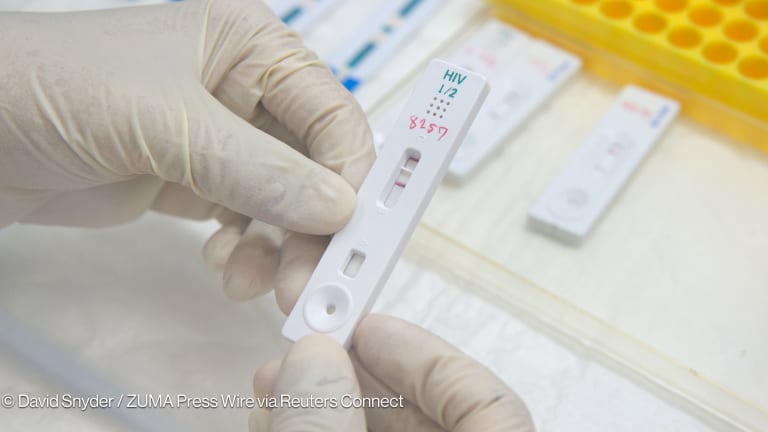
The United Nations released a report Monday (Nov. 21) showing what it claims are “optimistic results” in the global fight against HIV and AIDS.
Data from the UNAIDS report showed fewer AIDS-related deaths — from 1.9 million in 2009 to 1.8 million in 2010. In poor countries, about 700,000 deaths in 2010 alone have been averted as more people gained access to anti-retroviral drugs. It says half of the people eligible for treatment are now receiving ARVs.
But while the fight against AIDS-related deaths is showing promise, infections remain high at 2.7 million every year.
The U.N. report says infections have been on a steady drop since 2007, but 2010 recorded the highest number of people living with HIV worldwide. It is estimated that up to 34 million are living with the virus today, up 17 percent from 2001. And although the number of new infections in sub-Saharan Africa has fallen by more than 26 percent, the region continues to be the most heavily affected — 68 percent of people in the region are afflicted with HIV.
Eastern Europe and Central Asia are not performing any better. The number of people living with HIV in both regions have risen 250 percent since 2001, with drug users and prostitutes the most infected. The situation in North America and parts of Western and Central Europe “remains stubbornly steady.” And for countries with large populations, the problem lies in the limited number of people who have access to treatment. Less than 20 percent of those needing treatment get it in Egypt, Iran, Pakistan and Ukraine. In Bangladesh, China, India, Indonesia, Nigeria and Russia, meanwhile, only 40 percent of the population receive treatment.
The United Nations looks into the wide-scale availability of ARVs and its new Investment Framework as answers in its vision toward a zero new HIV infections, zero discrimination and zero AIDS-related deaths future, but funding cuts around the corner threaten its progress.
Just last year, donor funds dropped from $7.6 billion to $6.9 billion.
In a report from The Associated Press, Sharonann Lynch, HIV policy adviser at Médecins Sans Frontières, said the financial crisis is affecting treatment. In Congo, for example, enrollment for the treatment in some clinics has stalled or been suspended.
“Just at the moment when we know how to manage HIV, we’re hitting the brakes,” she said. “Without more investment, we’ll be squandering the best chance we have of getting ahead of the new wave of infections.”
Médecins Sans Frontières Spokesman Tido von Schoen-Angerer added that “governments in some of the hardest hit countries want to act on the science, seize this moment and reverse the AIDS epidemic. But this means nothing if there’s no money to make it happen.”
In June, members of the United Nations agreed to increase the funding for HIV prevention and treatment between $22 billion and $24 billion come 2015, the report said.
Read more development aid news online, and subscribe to The Development Newswire to receive top international development headlines from the world’s leading donors, news sources and opinion leaders — emailed to you FREE every business day.








